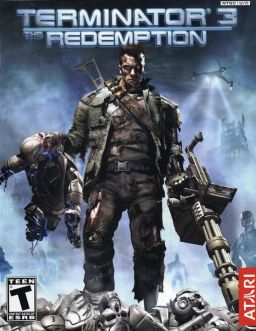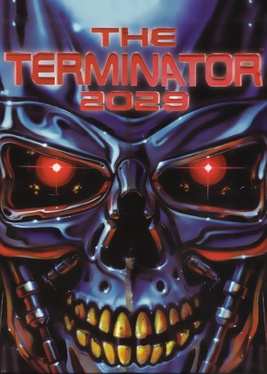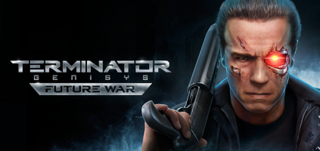
Quake II is a 1997 first-person shooter video game developed by id Software and published by Activision. It is the second installment of the Quake series, following Quake. The game's storyline is continued in its expansions, including one tying in Quake II and the first game, and Quake 4.

Soldier of Fortune is a first-person shooter video game developed by Raven Software and published by Activision in 2000 for Microsoft Windows. It was later released for the PlayStation 2, as well as the Dreamcast, while Loki Software also made a port for Linux. It was digitally re-released on GOG.com on October 2, 2018, along with its two successors. The player takes on the role of a U.S. mercenary as he trots around the globe hoping to halt a terrorist nuclear weapons plot.
Quake is a series of first-person shooter video games, developed by id Software and, as of 2010, published by Bethesda Softworks. The series is composed of Quake and its nonlinear, standalone sequels, which vary in setting and plot.

Descent II is a 1996 first-person shooter game developed by Parallax Software and first published for DOS by Interplay Productions. For the PlayStation, it is known as Descent Maximum. It is the second installment in the Descent video game series and the sequel to Descent. The base of the gameplay remaining the same, the player controls a spaceship from the pilot's perspective and must navigate extrasolar underground mines to locate and destroy their reactors and escape being caught in their self-destructions, while engaging and surviving infected robots, which will attempt to destroy the ship. Unlike other first-person shooters, its six-degrees-of-freedom scheme allows the player to move and rotate in any three-dimensional space and direction.

SWAT 3: Close Quarters Battle is a 1999 tactical first-person shooter video game developed by Sierra Northwest and published by Sierra Entertainment exclusively for Microsoft Windows. It is the seventh installment of the Police Quest series and the third installment in the SWAT subseries. SWAT 3 follows the Los Angeles Police Department Metropolitan Division SWAT team as they combat a wave of violent crime and terrorism in Los Angeles in the lead-up to a nuclear disarmament treaty signing.

Terminator 3: War of the Machines is a 2003 first-person shooter video game based on the film Terminator 3: Rise of the Machines. It was developed by Hungarian developer Clever's Games and published by Atari for Microsoft Windows. The game is set in a post-apocalyptic future when human and machine forces are battling for the world, and the player chooses which side to join. The game was negatively received, particularly for its character animations and artificial intelligence. Critics also viewed the game as a poor imitation of Battlefield 1942.

Star Trek: The Next Generation – Klingon Honor Guard is a first-person shooter set in the universe of Star Trek during the time of The Next Generation. The game was developed by MicroProse in 1998, using the Unreal game engine. The critical response to the title was generally positive with praise for the graphics, but mixed opinions of the level design.

Extreme PaintBrawl is a paintball video game released for DOS/Windows on October 20, 1998. The game is considered to be one of the worst video games ever made. Extreme PaintBrawl was developed in two weeks using the Build engine; its soundtrack was composed by musician Todd Duane, who sent his demo tracks to Head Games. The game was followed by Extreme PaintBrawl 2 in 1999, Ultimate PaintBrawl 3 in 2000, and Extreme PaintBrawl 4 in 2002, all of which were met with negative reviews.

Terminator 3: The Redemption is an action-adventure video game based on the 2003 film Terminator 3: Rise of the Machines. It was developed by Paradigm Entertainment and published by Atari in 2004 for the PlayStation 2, Xbox, and GameCube. Terminator 3: The Redemption received "mixed or average" reviews according to Metacritic. It was praised for its graphics and was considered an improvement over an earlier game ; however, the gameplay was criticized as linear, repetitive and difficult.

The Terminator 2029 is a first-person shooter video game developed and published by Bethesda Softworks. It is based on the Terminator film series, and was released in 1992 for DOS. It is Bethesda's second Terminator game following The Terminator (1990).

The Terminator: Rampage is a first-person shooter video game released for personal computers with the operating system DOS by Bethesda Softworks in 1993. It is the third game based on the Terminator film series that was made by Bethesda, following The Terminator and The Terminator 2029.

Skynet is a computer game based on the Terminator media franchise. It was intended as an expansion pack for the predecessor The Terminator: Future Shock, but was adapted into a standalone product.

Terminator Salvation is a third-person shooter action video game, released on May 19, 2009 to coincide with the release of the film of the same title on the same week. It was developed by The Halcyon Company's gaming subsidiary, Halcyon Games, along with Grin and published by Equity Games and Evolved Games. The game was Grin's last game and was released for Microsoft Windows, PlayStation 3, Xbox 360, mobile, and iOS.

Brink is a first-person shooter video game developed by Splash Damage and published by Bethesda Softworks for Microsoft Windows, PlayStation 3 and Xbox 360 in May 2011. In Brink, two factions, Resistance and Security, battle in a once-utopian city called The Ark, a floating city above the waters of a flooded Earth.

Aqua is an arcade-action shooter with tactical elements, driven by a steampunk story in which the vast majority of the world is covered with water. Aqua was developed by Games Distillery on their own proprietary engine and published by Microsoft Game Studios. It was released for the Xbox 360 via Xbox Live Arcade on May 19, 2010. The game is set in an alternate reality where most of the Earth is covered with water and factions war for the remaining pieces of land.

Heavy Gear II is a mecha based first-person shooter video game. Set in Dream Pod 9's Heavy Gear universe, the game was developed and published by Activision in 1999 for Microsoft Windows; it was ported to Linux in 2000 by Loki Software. It is a sequel to the 1997 video game Heavy Gear.

Terminator Genisys: Future War is a mobile MMO strategy video game created by Plarium in cooperation with Skydance Media. The events of the game take place in a post-apocalyptic future years after the events of the Terminator Genisys film. Originally developed as a sequel film, the game was announced on June 28, 2016 and released on May 18, 2017 on the iOS App Store and Google Play. It uses Plarium's usual model of free to play, with some in-game features and upgrades available to purchase.

Terminator: Resistance is a 2019 first-person shooter game developed by Teyon and published by Reef Entertainment for PlayStation 4, Windows, and Xbox One. The game is based on the Terminator franchise, set during the original future war depicted in the films The Terminator and Terminator 2: Judgment Day. It was released in Europe on 15 November 2019. In the United States, the Windows version was released a day earlier through Steam, while the other versions released on 7 January 2020. An enhanced version of the game for PlayStation 5 was released on 30 April 2021. The same version was released for Xbox Series X/S on 27 October 2023. It received generally mixed reviews from critics.


















